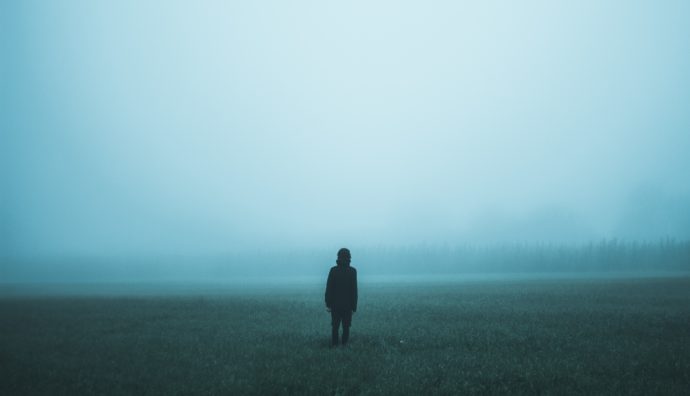One of the characteristics of Martial Arts is to use an exotic nomenclature. Not only because the terms are usually given in the original Oriental languages but also because their translation often evokes imaginative concepts.
And, you know, the fervent imagination of the average practitioner comes on when he hears about “secret techniques”. On average one already sees himself as the sixty-sixth successor of the Divine School of Hokuto, while performing a technique at the Dojo, ended with a still frame at the topical moment, subtitled in Japanese and with a voiceover that says with perfect diction: “ten chi nage – throw heaven earth “.
A family of techniques (waza) that particularly tickles the imagination is kasumi waza (霞 技), the techniques of the mist.
And here one imagines the ninjas who launch magic potions to create a dense smoke curtain and disappear.
Then the TV is turned off, you return to reality and you start to see that the mind fogging of the opponent is transversal to the various disciplines.
In Ju-jutsu, the blows (atemi) given to the temples are precisely described as kasumi.
In Ninjutsu some guards are specially intended to launch objects towards the opponent’s face in order to strike, stun and launch the final attack (think of the attack with the chain and the sickle, the kusari gama)
In Judo there is the katate kasumi, a rapid counter-rotating movement of the hand to divert the opponent and subsequently throw him on the ground.
And in Aikido?
Aikido does not come out of the blue but from that experiential mixer in which Morihei Ueshiba (but also many if not all of his direct students) have summarized the teachings transmitted up to that time in the various combat arts.
Old terms for new semantics? Probably yes.
Certainly the stun (harmful) obtained with the percussion to the temples or in any case to the face, is something that Aikido has abandoned, transforming the percussive blows, the atemi, from an instrument of offense to an instrument of control of the distances in the couple, of the mutual axes and hence of balance.
In the study of weapons, which in the original perspective of Aikido is quantitatively and qualitatively as important as the study with bare hands, the concept of kasumi has probably kept alive those strategic methods, bordering on the obsessive, which were typical of men of arms Japanese.
The guard of the sword with his arms extended but relaxed, pointing the opponent’s optical axis in order not to provide precise indications on the length of the weapon …
The knife grasped and partially hidden under the forearm, with the blade arranged in such a way as to exploit the return of a failed attack …
The sheath of the jo covered by holder’s shape, always in order not to provide information on length and position …
The hakama that hides the flexed position of the legs and the location of the feet …
These are some of the elements in which there is a trace of the ancient concern of leaving nothing to chance.
(And with all that, one meets masters such as Daniel Toutain, who grew up in the wake of Morihiro Saito, who says to you more or less like this: “Look, your opponent already knows you have a stick, the sheath is used to load the hips and strike with power, not to hide “…)
So what do we need to know that “fog techniques” existed (and exist)?
It may be, especially in this period of strong media pressure, of emotional, physical and material stress, that it is good for us to remember that in a conflict the opponent is there to win and submit. And one of the main ways is to confuse, cloud the senses and suffocate the lucidity of those in front of them.
If then the attack, first, is confused by itself, losing its stability, breathing, lucidity, the game becomes easy.
The surprise, the deception, the daze: knowing that the opponent has these techniques is already a good antidote to not fall victim to his illusions.
For this the practice, sweetened as much as we want, of simple exercises (the guard of a sword, the sheath of a stick) actually becomes a small but powerful antidote for those types of attacks that are all the more dangerous the more they are launched far from the Dojo .
If we know that a situation of objective crisis is enhanced by our fears and those induced. That the attack is amplified by certain communication and distorted by certain reactions. That a virus is enough to expose a structural and infrastructural weakness that evidently existed even before… Then it is probably really true that it is just fog.
And that it is necessary to have a small “heart of pure sky” in order to recall there is always a cristal clear, blue sky, over there.
Disclaimer Photo by Jakub Kriz on Unsplash

